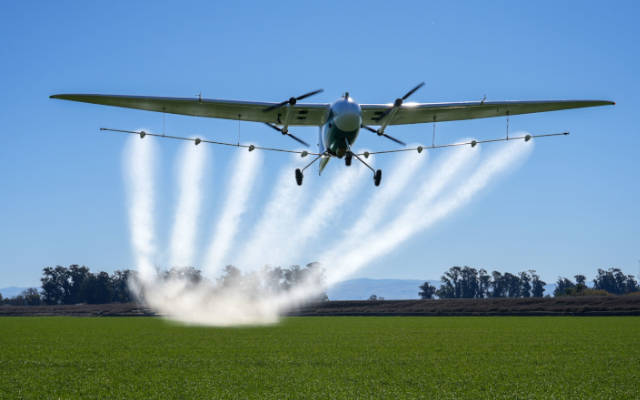A Different Kind of Crop Duster

Pyka Pelican 2 autonomous aerial spraying aircraft
By EVWorld.com Si Editorial Team
Pyka's Pelican 2 - The Autonomous Electric That's Reshaping Ag Aviation
For a century, agricultural aviation has been defined by the pilot in the cockpit, low-level flying, and a constant, high-risk operational environment. While crop dusting has become a critical, high-tech operation involving GPS and advanced spray equipment, the fundamental model remained largely unchanged - until now. Pyka, an Alameda, California-based company, has not only electrified the aerial application segment but has also made it autonomous. Their Pelican 2, a large, all-electric, uncrewed aircraft system (UAS), is rewriting the flight manual for agricultural aviation.
The stats on Pyka's latest platform are immediately impressive. With a wingspan of 38 feet, the Pelican 2 is the largest UAS ever approved by the Federal Aviation Administration (FAA) for commercial operation in the U.S., a follow-up to its trailblazing predecessor. Weighing in at 1,320 pounds gross takeoff weight and capable of carrying a 300-liter (nearly 80-gallon) liquid payload, the Pelican 2 performs like a much larger, piloted aircraft. But the key to its game-changing ability lies not in its size, but in its self-flying technology and electric propulsion.
Electrons on the Farm
The Pelican 2 is powered by a four-motor electric propulsion system, delivering reliability and a major departure from the piston- and turbine-powered aircraft that have long dominated the field. The power plant is fed by five hot-swappable lithium-ion battery sets, which enable continuous 24/7 operation - a critical feature for farmers who often need to spray at night when winds are calm and drift is minimized. This ability dramatically increases the operational window, allowing for more efficient application during optimal weather conditions.
But what's it like to fly a Pelican? Well, you're not exactly in the cockpit. Instead, a ground-based operator manages the entire process from a safe distance. The aircraft's autonomous flight engine relies on inputs from a suite of advanced sensors, including forward-facing LiDAR and downward-facing lasers. This system processes millions of data points per second, creating a dynamic 3D map for navigation, obstacle avoidance, and precise flight path planning.
This autonomy offers a significant safety upgrade. Agricultural flying is known for its hazards, with low-altitude flight and high-risk maneuvers being part of the job. By removing the pilot from the cockpit, Pyka eliminates the risk of human error and exposure to hazardous materials.
Precision, Efficiency, and Regulation
The real-world benefits of the Pelican 2 extend well beyond safety. The aircraft's proprietary electric rotary atomizers can dynamically adjust droplet size during flight, maximizing the efficacy of chemical treatments and minimizing harmful drift. This level of precision is an order of magnitude more accurate than traditional methods, leading to less chemical usage, reduced environmental impact, and significant cost savings for growers. With a swath width of 18 meters, the aircraft can cover up to 90 hectares (over 220 acres) per hour.
The FAA's approval of the Pelican 2 for commercial use in February 2025 was a landmark moment, but it wasn't the first regulatory hurdle cleared by Pyka. As the company's CEO and co-founder Michael Norcia notes, Pyka was the first to receive such authorization for a large autonomous electric aircraft and has been operating commercially since 2021. The company has since partnered with major players in the agricultural sector, including SLC Agricola in Brazil and Heinen Brothers Agra Services in the U.S., proving the concept is viable on a global scale.
The Cargo Connection and Future
While the Pelican 2 has been making waves in the ag world, the core technology is proving its versatility elsewhere. The Pelican Cargo variant has been deployed for logistics, transporting up to 400 pounds over a 200-mile range. This capability is being used to enhance express logistics networks and deliver critical supplies to remote areas. For military and humanitarian applications, Pyka also developed the hybrid-electric DropShip, a heavy-lift platform with an even greater range and payload capacity.
Pyka's vertically integrated approach - building everything from the airframes to the flight software in-house - gives them a unique advantage in rapidly iterating and deploying new capabilities. The company's journey from a startup to a pioneer with FAA-certified, large-scale commercial operations showcases a compelling future for autonomous electric aviation. As Norcia and his team continue to innovate, they are not just developing new aircraft; they are building a new paradigm for how the world's most critical aerial operations get done.
Original Backlink
Views: 228
Articles featured here are generated by supervised Synthetic Intelligence (AKA "Artificial Intelligence").
